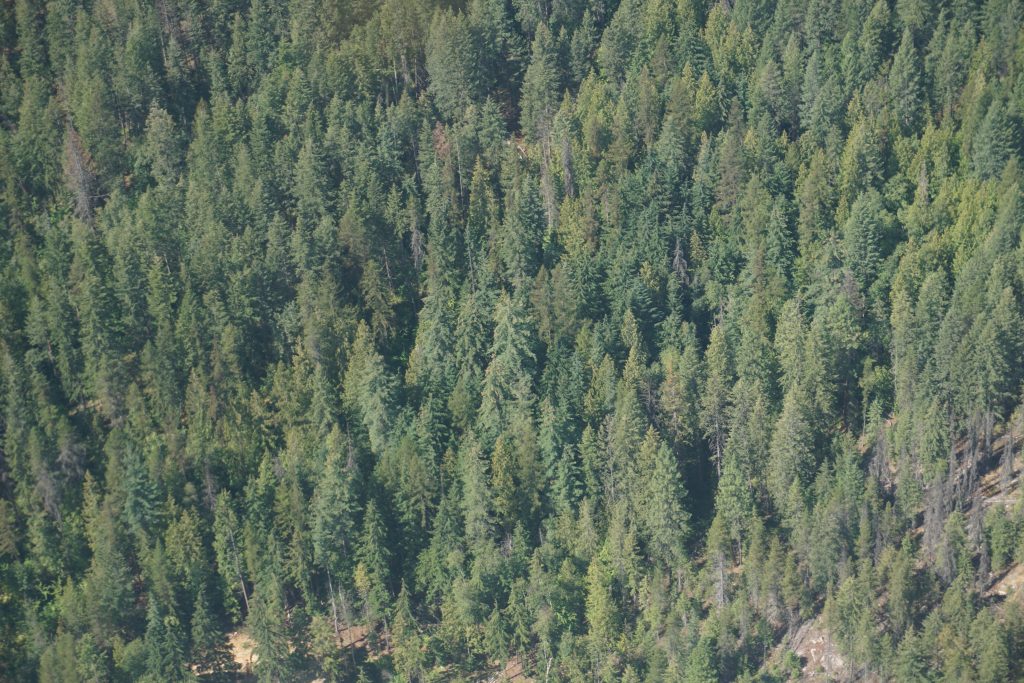
Industry News
News
Old-growth logging in B.C. declines to record lows
November 3, 2022 By Government of B.C.
 Photo: Annex Business Media.
Photo: Annex Business Media. As British Columbia continues implementation of the Old Growth Strategic Review, the latest numbers released show old-growth logging in B.C. has decreased to the lowest level on record.
Logging of old growth has declined by 42 per cent, from an estimated 65,500 hectares in 2015 to 38,300 hectares in 2021. The area logged in 2021 represents 0.3 per cent of the estimated 11.1 million hectares of old growth in the province.
“Our vision for forestry is one where we better care for our most ancient and rarest forests, First Nations are full partners in sustainable forest management, and communities and workers benefit from secure, innovative jobs for generations to come,” said Katrine Conroy, Minister of Forests. “The latest numbers show that B.C. is on the right track as we work to develop and implement new long-term solutions for better managing, preserving and sharing the benefits of our forests.”
In November 2021, the province released the findings of the independent Old Growth Technical Advisory Panel. The panel identified four million hectares of old forests most at risk of biodiversity loss.
In total, approximately 80 per cent of the priority at-risk old growth identified by the panel is not threatened by logging because it is permanently protected, covered by recent deferrals and/or not economic to harvest. This is an area as large as Vancouver Island, and equal to 7,600 Stanley Parks, a 405-hectare public park located in Vancouver. By contrast, 0.23 per cent of the forests identified by the panel were logged in the past year.
“B.C.’s forests are part of our natural heritage, and British Columbians care deeply about them and the multitude of social, ecological, and cultural benefits they provide,” said Josie Osborne, Minister of Land, Water and Resource Stewardship. “Through the actions underway, we are making progress on developing an effective old-growth management system, one that prioritizes ecosystem health and community resiliency, so B.C.’s forests will continue to sustain our communities and ecosystems for generations to come.”
Logging deferrals are a temporary measure to prevent biodiversity loss while the Province, First Nations and other partners develop a new, long-term approach to forest management that prioritizes ecosystem health and community resiliency.
This approach will be based on the recommendations of the Old Growth Strategic Review and will recognize that a shift to prioritize ecosystem health is necessary to ensure B.C.’s forests continue to provide essential benefits, such as clean air, clean water, carbon storage, wildlife habitat, recreation and conservation of biodiversity – in addition to timber supply.
The prioritization of ecosystem health will be a central focus of the province’s shift to Forest Landscape Planning and Land Use Planning processes that are being undertaken in partnership with First Nations and full engagement of local governments, stakeholders and the public. This will support the long-term implementation of old-growth management.
It will also provide clarity in the areas of forest that should be protected, the areas that may support some harvest under strict management conditions that prioritize ecosystem health, and the areas that can be accessed for sustainable timber management to support workers and communities. The result will be protection for more of B.C.’s most important forests and more certainty to support investment and jobs.
To support implementation of the Old Growth Strategic Review, the province is working toward a new Old Growth Strategic Action Plan to be developed in partnership with First Nations and completed by the end of 2023.
“It was an honour to have an opportunity to engage with and hear from British Columbians directly about how they value old forests and how they believe they should be managed. The report recommendations now being implemented reflect the expanding recognition that First Nations have always made a significant contribution to stewardship, particularly in regard to our old-growth forests. This is the way forward to modernizing the management of old forests in British Columbia,” said Garry Merkel, independent coach and mentor for Old Growth Strategic Review implementation.
Quick facts:
Old growth is defined as trees more than 140 or 250 years old on the coast and more than 140 years old in the Interior, depending on the type of forest.
There are approximately 11.1 million hectares of old growth in B.C., which covers approximately 12% of the entire province and 20% of B.C.’s forested land base.
For a graphic showing how much of B.C. is forested Crown land, old-growth forests and old growth harvested last year: news.gov.bc.ca/files/Annual_Old_Growth_Logging_MAP.pdf
Print this page